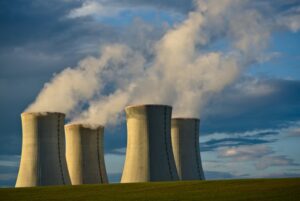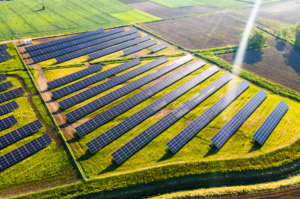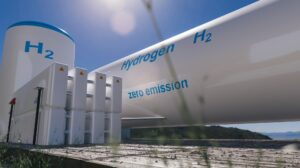Alberta 
Alberta Energy Regulator presents the 2025 Alberta Energy Outlook Report
 The Alberta Energy Regulator (AER) today released its 2025 Alberta Energy Outlook (a statistical report formerly known as ST98), a comprehensive review of 2024 production and a 10-year forecast covering Alberta’s full energy mix—from conventional oil and gas to hydrogen, geothermal, helium, and lithium. The energy sector in Alberta invested a nine-year high of CAD$30.9 billion developing crude oil, natural gas, oil sands, and emerging resources.
The Alberta Energy Regulator (AER) today released its 2025 Alberta Energy Outlook (a statistical report formerly known as ST98), a comprehensive review of 2024 production and a 10-year forecast covering Alberta’s full energy mix—from conventional oil and gas to hydrogen, geothermal, helium, and lithium. The energy sector in Alberta invested a nine-year high of CAD$30.9 billion developing crude oil, natural gas, oil sands, and emerging resources.
Growth is not limited to oil and gas. Alberta’s emerging-resource sector—hydrogen, geothermal, helium, and lithium—continues to accelerate: hydrogen production is expected to climb from 2.6 million tonnes/yr in 2024 to 4.4 million t/yr by 2034, an average annual increase of six per cent; geothermal output is forecasted to expand, and helium production is expected to be fivefold over the same period, buoyed by recent project announcements; though Alberta has no commercial lithium output today, production is forecast to reach 14.8 thousand t/yr by 2034, supporting battery-metal supply chains.
Source: Alberta Energy Regulator
Electricity Prices for Alberta
The Alberta power pool price averaged 4.675 cents per kWh in June 2025. This price is 0.576 cents higher than last month’s average of 4.099 cents. The pool price has averaged 4.694 cents per kWh over the last 12 months.
As of July 1, 2025, the forward market was predicting electricity prices for the calendar years of 2025, 2026, 2027, 2028, 2029, 2030, and 2031. These prices are 5.318, 5.379, 6.075, 7.505, 7.705, 8.160, and 8.160 cents per kWh respectively.
Gas Prices for Alberta
Direct Energy’s gas rate for June 2025 was $1.775 per GJ in Alberta. The July 2025 rate has been set at $1.097 per GJ. Alberta gas prices have averaged $1.712 per GJ over the last 12 months.
As of July 1, 2025, the forward market was predicting gas prices for the calendar years of 2025, 2026, 2027, 2028, and 2029. These prices are 1.70, 2.81, 2.93, 2.88, and 2.94 cents per GJ respectively.
British Columbia 
B.C. calls for proposals for clean energy procurement
BC Hydro has launched two requests for expressions of interest (RFEOI) to explore the next era of the province’s power potential, expand clean-energy resources and advance energy efficiency. These actions are critical to ensuring a stable, reliable electricity system that supports new housing, businesses and industries while keeping energy costs affordable for people. The first RFEOI focuses on expanding B.C.’s long-term capacity to meet peak electricity demand as consumption patterns evolve. The second RFEOI targets innovation in energy efficiency by identifying partners capable of delivering market-ready technologies that help conserve energy in homes and buildings. Energy efficiency is the cleanest and least expensive way to meet increasing demand for power.
Both initiatives are part of the recently announced Clean Power Action Plan, an ambitious strategy to strengthen energy security, enhance system resilience and accelerate the transition to clean power. The following BC Hydro actions will power more than one million new homes in the coming years: Adding the Site C hydroelectric dam, which will generate enough electricity to power 500,000 homes and increase supply by eight per cent; bringing new renewable wind and solar projects into service from the recent call for power, collectively powering 500,000 homes and boosting supply by eight per cent; expanding investments in energy efficiency, expected to save 2,000 gigawatt-hours of electricity annually, enough to power 200,000 homes.
Source: Environment Journal
Ontario 
Nuclear Power Central to Ontario’s 2025 Energy Plan
 The Government of Ontario’s Energy for Generations plan outlines the province’s strategy to meet rising energy demand through 2050. The plan integrates electricity, natural gas, hydrogen, storage, and other sources into a single long-term framework, with nuclear being identified as the foundation of Ontario’s clean, affordable, and reliable electricity system. Ontario’s electricity demand is forecast to increase by 75% by 2050, driven by economic and population growth, as well as the electrification of transportation, industry, and heating. To meet this demand, the province is planning a major expansion of nuclear capacity. Nuclear currently supplies over half of Ontario’s electricity and forms the backbone of the province’s low-emissions grid. The plan validates the refurbishment of 10 nuclear reactors. Ontario’s integrated energy planning approach also links nuclear expansion with broader economic and industrial goals.
The Government of Ontario’s Energy for Generations plan outlines the province’s strategy to meet rising energy demand through 2050. The plan integrates electricity, natural gas, hydrogen, storage, and other sources into a single long-term framework, with nuclear being identified as the foundation of Ontario’s clean, affordable, and reliable electricity system. Ontario’s electricity demand is forecast to increase by 75% by 2050, driven by economic and population growth, as well as the electrification of transportation, industry, and heating. To meet this demand, the province is planning a major expansion of nuclear capacity. Nuclear currently supplies over half of Ontario’s electricity and forms the backbone of the province’s low-emissions grid. The plan validates the refurbishment of 10 nuclear reactors. Ontario’s integrated energy planning approach also links nuclear expansion with broader economic and industrial goals.
Source: Canadian Nuclear Association
Saskatchewan 
Saskatchewan government planning to extend lifetimes of coal-fired power plants
Saskatchewan’s government is planning to use coal power as a ‘bridge’ to nuclear baseload power generation. Minister in Charge of SaskPower Jeremy Harrison said that while Saskatchewan remains committed to building a nuclear based net-zero power grid by 2050, the province is moving towards an “all-of-the-above approach” to meet projected growth in demand. Boundary Dam 4, one of the coal-powered generators at the plant near Estevan, will be the first to be restored. According to SaskPower, Boundary Dam has a total of five units for a combined power capacity of 531 megawatts. One of the units is connected to carbon capture technology, the only coal plant in the country in compliance with federal rules to operate past 2030. All Saskatchewan coal power plants are still listed on the federal government’s page on the planned phase out with a final day of operation of December 31, 2029.
Source: CTV News
Manitoba 
Manitoba Government Launches New Affordable Home Energy Program
 The Manitoba government has launched the Affordable Home Energy Program, making it easier for homeowners to upgrade to energy-efficient heat pumps and start saving on their energy bills, Environment and Climate Change Minister Mike Moyes announced. The program, delivered through Efficiency Manitoba, helps cover the cost of ground-source heat pumps for eligible homeowners. Manitobans who heat their homes with electricity could lower their energy bills by up to 30 per cent, approximately $1,000, in the first year. The Affordable Home Energy Program offers flexible options, including a no-upfront-cost option, so families can start saving on their energy bills right away, noted the minister. It also includes support for retrofits in multi-unit residential buildings, in addition to single family homes.
The Manitoba government has launched the Affordable Home Energy Program, making it easier for homeowners to upgrade to energy-efficient heat pumps and start saving on their energy bills, Environment and Climate Change Minister Mike Moyes announced. The program, delivered through Efficiency Manitoba, helps cover the cost of ground-source heat pumps for eligible homeowners. Manitobans who heat their homes with electricity could lower their energy bills by up to 30 per cent, approximately $1,000, in the first year. The Affordable Home Energy Program offers flexible options, including a no-upfront-cost option, so families can start saving on their energy bills right away, noted the minister. It also includes support for retrofits in multi-unit residential buildings, in addition to single family homes.
Source: Government of Manitoba
New Brunswick 
Volatus Aerospace Supports J.D. Irving, Limited’s Vision for Drone-Powered Tree Planting in New Brunswick
Volatus Aerospace Corp. announced a strategic collaboration with J.D. Irving, Limited (JDI) to advance Spring 2025 tree planting operations in New Brunswick. This initiative supports JDI’s leadership in managing working forests by integrating advanced heavy-lift drone technology to enhance their efficiency, scalability and environmental impact. As part of the project, Volatus will provide a heavy-lift Remotely Piloted Aircraft System (RPAS) capable of transporting seedlings and supplies to planting crews operating in remote and difficult-to-access terrain. JDI is a leader in planting trees nationally and has planted more than 1.1 billion trees since 1957. Drone-based seedling delivery is a scalable, low-cost solution accelerating global tree planting and forestry operations. By combining AI, automation, and remote sensing, drones enable high-volume planting in remote terrain with minimal environmental impact—aligning with sustainability priorities while creating long-term value in the growing carbon market.
Source: The Canadian Press
Prince Edward Island 
PEI pauses intake for heat pump program, changes rebate structure
The Government of Prince Edward Island (PEI) has paused intake for its heat pump program and changed the rebate structure, with these changes announced alongside several others for its energy efficiency programs for homeowners. Part of these updates will see a decrease in available heat pump rebates for residential properties, with rebates changing from $2,400 to $1,800 for eligible lower income families and decreasing from $1,200 to $900 for mini splits. The province’s Oil to Heat Pump Affordability and Net Zero Free programs have also been paused for intake as of June 2 due to overwhelming demand. The PEI government has also changed incentive rates for solar panels on residential properties, capping the program at $5,000. Despite these changes, the province’s solar panel program for commercial operations remains unchanged, along with rebates for other forms of energy efficiency equipment. Despite these rebate programs being scaled back at the moment, the province has expanded the eligibility and rebate for home insulation, windows and doors. Residential rental property owners are now eligible to apply for the program alongside homeowners, with a 40% increase being applied to these rebates.
Source: HPAC Magazine
Québec 
Hydro-Quebec to add 3,000 MW of solar energy by 2035
 Hydro-Québec aims to develop 3,000 MW of solar energy by 2035. By adapting to the advances in solar power and Québec’s needs, the public utility will be able to use an evolving, rigorous approach in rolling out these projects. “Hydroelectricity remains at the very heart of our energy system; the roles of wind power and energy efficiency have been strengthened; and we’re now adding solar energy as a complementary source. Solar power offers significant potential for Québec, and we will develop it in an evolving and rigorous manner, in collaboration with host communities and First Nations and Inuit,” said Michael Sabia, President and Chief Executive Officer of Hydro-Québec. Hydro-Québec’s approach is based on three main principles:
Hydro-Québec aims to develop 3,000 MW of solar energy by 2035. By adapting to the advances in solar power and Québec’s needs, the public utility will be able to use an evolving, rigorous approach in rolling out these projects. “Hydroelectricity remains at the very heart of our energy system; the roles of wind power and energy efficiency have been strengthened; and we’re now adding solar energy as a complementary source. Solar power offers significant potential for Québec, and we will develop it in an evolving and rigorous manner, in collaboration with host communities and First Nations and Inuit,” said Michael Sabia, President and Chief Executive Officer of Hydro-Québec. Hydro-Québec’s approach is based on three main principles:
Preparing for the future – over the next 10 years, solar will establish itself as an additional option to help the energy system evolve; adapting to advances in the sector – depending on the performance of the first projects, perspectives may shift, but the goal of implementing this plan at the best possible cost will be maintained; and promoting Québec’s economic development-Québec content will be favoured, and economic spinoffs will be maximized for Québec, the host communities, and First Nations and Inuit.
Source: Environment Journal
Newfoundland and Labrador 
As hydrogen hype meets reality in Newfoundland, companies eye markets closer to home
The global green hydrogen industry is lagging behind its own hype, but executives from six companies vying to build wind-powered hydrogen operations in Newfoundland and Labrador say it’s too soon give up. They told an energy industry conference in St. John’s, N.L., on Wednesday that it has been difficult to find big enough buyers — or “offtakers” — to make the projects viable. But economic uncertainty in the United States could create opportunities in Canada, some said. And there may be a chance to supply wind power to the local grid in Newfoundland and Labrador. Most of the companies have proposed erecting wind turbines in select areas across the island of Newfoundland to power plants to produce ammonia. That ammonia would then be shipped across the Atlantic to be converted to hydrogen and used for fuel. North Atlantic is looking at using liquid organic hydrogen carriers, which absorb and release hydrogen through chemical reactions, rather than ammonia. Ultimately, the goal is to reduce the costs of shipping in order to attract buyers.
Source: The Canadian Press
Nova Scotia 
Green hydrogen projects fuelled by Nova Scotia’s Clean Fuels Fund
 The Nova Scotia government is supporting several green hydrogen projects in the second round of funding from the Clean Fuels Fund. In all, seven projects involving clean fuels innovation were provided a total of $3 million. Examples of the projects include: Innergex is receiving $793,000 to develop a hydrogen production hub called Osprey H2 in Halifax Regional Municipality (HRM). The aim is to produce hydrogen for domestic customers; Waterford Energy Services Inc. is also receiving $793,000 for a demonstration project to build a small-scale, mobile green hydrogen production facility. The aim is to create a facility that can be moved to different locations as needed; and the Municipality of the County of Richmond will use $221,250 to develop a clean fuels strategy for the Strait of Canso.
The Nova Scotia government is supporting several green hydrogen projects in the second round of funding from the Clean Fuels Fund. In all, seven projects involving clean fuels innovation were provided a total of $3 million. Examples of the projects include: Innergex is receiving $793,000 to develop a hydrogen production hub called Osprey H2 in Halifax Regional Municipality (HRM). The aim is to produce hydrogen for domestic customers; Waterford Energy Services Inc. is also receiving $793,000 for a demonstration project to build a small-scale, mobile green hydrogen production facility. The aim is to create a facility that can be moved to different locations as needed; and the Municipality of the County of Richmond will use $221,250 to develop a clean fuels strategy for the Strait of Canso.
The aim is to harness the significant green hydrogen potential for local heavy industry. Other projects explore further potential for hydrogen to decarbonize transportation and the use of biomass for heating and clean fuel. The Clean Fuels Fund includes initiatives to reduce greenhouse gas emissions, switch to clean energy and transportation, create a clean economy, make homes and buildings energy efficient and able to stand up to the impacts of climate change, and help Nova Scotians adapt to the changing climate.
Nunavut 
CIB’s inaugural Nunavut investment enables territory’s first wind energy and storage project
A $6.7 million loan through the Canada Infrastructure Bank’s (CIB) Indigenous Community Infrastructure Initiative (ICII) will help fund the Anuriqjuak Nukkiksautiit Project (ANP), which includes a 1-megawatt wind turbine and a 1 megawatt-hour energy storage system. Led by the Inuit-owned Nunavut Nukkiksautiit Corp. (NNC), a subsidiary of Qikiqtaaluk Corp., ANP will replace up to 70%, or 600,000 litres, of the community’s diesel use for electricity with renewable electricity. Power generated will be sold to Qulliq Energy Corporation (QEC) and integrated into the local grid. Nunavut currently relies entirely on fossil fuels for electricity, with no shared transmission grid. Each community operates its own diesel-powered energy plant, which leads to some of the highest electricity rates in Canada. Once operational, the project is expected cut emissions by approximately 1,559 tonnes per year.
Source: Cision
Northwest Territories 
Ottawa commits nearly $7M to two NWT energy projects
Federal environment minister Julie Dabrusin announced in Yellowknife, her department has committed $4.65 million to the Inuvialuit Regional Corporation for a project to supply ground-mounted solar installation kits to Inuvialuit-owned cabins in the NWT’s Inuvialuit Settlement Region. The project will include solar panel installation and maintenance workshops in six Inuvialuit communities. Funding for the projects comes from the Indigenous leadership stream of the federal government’s Low Carbon Economy Fund, which supports Indigenous-owned and led projects involved renewable energy, energy efficiency and low-carbon heating.
Source: Cabin Radio
Yukon 
Government of Yukon amends Air Emissions Regulation to reduce air pollutants and support a cleaner future
 The Government of Yukon is amending the Air Emissions Regulation to help minimize the release of harmful air pollutants from large-scale biomass burning systems, such as those found in schools, offices or large commercial buildings. Under the amended Regulation, biomass burning units equal to or greater than 150 kilowatts of heat output, of which there are currently four in the Yukon, will require an air emissions permit. The changes to the Regulation will come into effect on July 1, 2025. Any future systems will require an air emissions permit prior to initial startup and owners and operators of existing systems will require an air emissions permit by December 31, 2025.
The Government of Yukon is amending the Air Emissions Regulation to help minimize the release of harmful air pollutants from large-scale biomass burning systems, such as those found in schools, offices or large commercial buildings. Under the amended Regulation, biomass burning units equal to or greater than 150 kilowatts of heat output, of which there are currently four in the Yukon, will require an air emissions permit. The changes to the Regulation will come into effect on July 1, 2025. Any future systems will require an air emissions permit prior to initial startup and owners and operators of existing systems will require an air emissions permit by December 31, 2025.
Source: Government of Yukon